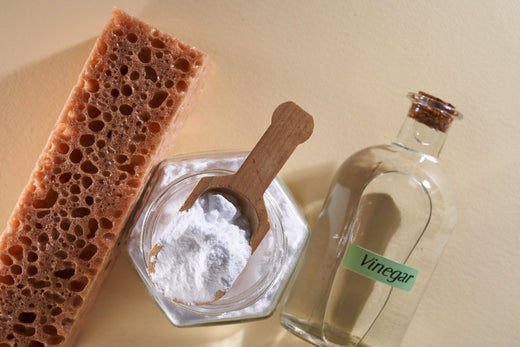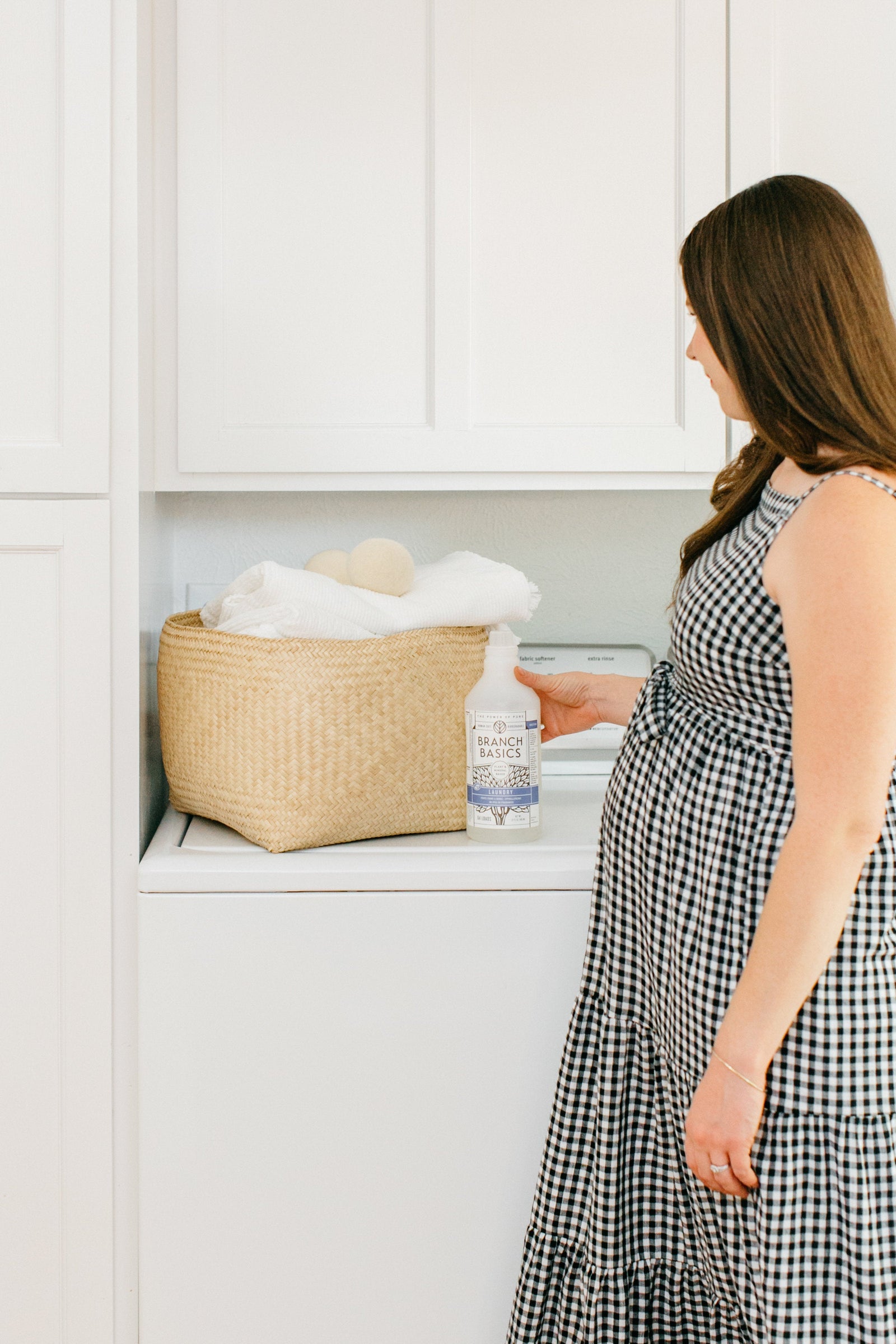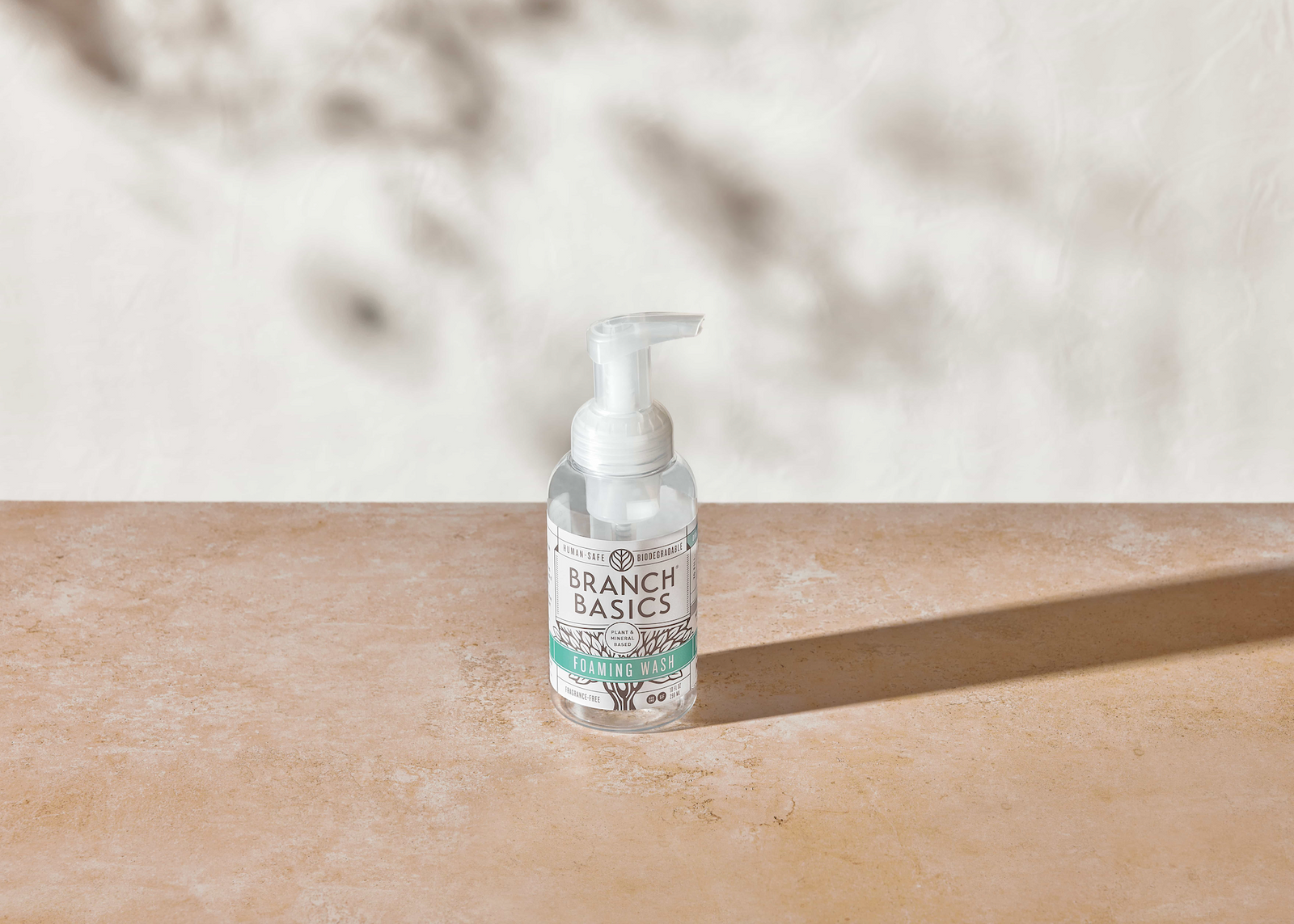8 Best Natural Disinfectants for Everyday Use

Did you know natural disinfectants can be as effective as chemical-based disinfectants, but without the safety concerns?
The key is knowing which natural disinfectants have been proven effective for eradicating various germs.
If you’re looking for human-safe alternatives to chemical disinfectants, like bleach or antibacterial cleaning products, read on for our top 8 natural disinfectants backed by science.
What is the Difference Between Cleaners and Disinfectants?
Typical cleaners, such as natural soap-based or some chemical products, contain surfactants that cling to and remove germs when washed or wiped away.
Sanitizers and disinfectants kill viruses and bacteria on surfaces.
There is a time and a place for cleaning versus cleaning and sanitizing or disinfecting, which we’ll discuss in more detail.
Read on to discover what you should use for a natural sanitizer or disinfectant!
Top 8 Best Natural Disinfectants and Sanitizers
So, what do you do when you need to disinfect or sanitize something and don’t want to use chemicals?
First, use a natural soap-based cleaner, like Branch Basics, to remove germs.
Next, use one or a combination of these natural disinfectants to sanitize or disinfect.
1. Hydrogen Peroxide
Hydrogen peroxide is a powerful, fragrance-free, non-toxic bleaching, cleaning, sanitizing, and disinfecting agent.*
Here’s how it works.
Hydrogen peroxide is very similar to water (H2o) in its composition, except it has an extra oxygen molecule (H2O2).
This extra oxygen molecule allows it to oxidize and kill germs, making it a great disinfectant for surfaces, sinks, tubs, and more.
The hydrogen peroxide available in most stores is a 3% concentration, which is strong enough to kill viruses, bacteria, fungi, and other pathogens.
A 2018 study even showed 3% hydrogen peroxide was more effective at killing germs and viruses that Quat-containing cleaners, like Lysol (Quats are a highly toxic chemical used in disinfectants, we’ll talk more about them coming up).
Hydrogen peroxide also makes an excellent bleach-alternative for cleaning and laundry, is easy to find, and is very affordable.
For ease of use, we recommend attaching a trigger sprayer directly to the bottle.
2. Dry Steam Cleaners
Dry vapor steam cleaners use superheated low moisture steam for disinfecting, sanitizing, and cleaning surfaces.
It is an amazing way to mechanically disinfect* your home naturally without creating fumes or waste.
We highly recommend the Ladybug Dry Steam Cleaner, which is unique for the following reasons:
- The Ladybug qualifies as a disinfection device* for the EPA. It disinfects virtually any hard surface (through proprietary TANCS® technology) thousands of times better than the standard that chemical disinfectants must meet to qualify as an EPA-registered disinfectant.
- Unlike chemical disinfectants that require dwell times where surfaces must remain visibly wet for minutes to kill germs, the Ladybug kills an extensive range of bacteria and viruses like MRSA, C. diff, norovirus, C. parvo, and COVID-19 in seven seconds or less while leaving no residue behind that promotes new microbial growth.
- It is also proven to eradicate hard-to-kill biofilms in three seconds. Strong chemical disinfectants such as bleach are no match!
How is mechanical disinfection different from chemical disinfecting?
As previously discussed, sanitizers and disinfectants have created a superbug issue, where germs left behind become resistant to disinfectant cleaners and antibiotics.
Mechanical disinfection with the Ladybug does not create superbugs.
Why? Because there is no chance for a germ to mutate to the point that it can resist the natural heat. Once again, nature provides a win-win solution.
The Ladybug Dry Steam Cleaner works well with Branch Basics or other human-safe cleaners.
3. Sodium Percarbonate (Branch Basics Oxygen Boost)
Sodium percarbonate, also known as “powdered peroxide” or “oxygen bleach” is a human-safe antibacterial, antifungal, anti-algae, anti-mold, and deodorizing powder rated 1-2 for “low toxicity” on the Environmental Working Group database.
Sodium percarbonate is considered very safe for humans and the environment because it decomposes into biodegradable:
- Sodium (Na+),
- Carbonate—a type of salt (CO32-),
- And peroxide—which is water with an extra oxygen atom (H2O2).
It is so safe; it’s one of the only disinfectants approved for use in organic aquaculture production.
It’s also one of two ingredients in our best-selling Oxygen Boost.
However, sodium percarbonate and Oxygen Boost are powders and are not designed to be used as surface disinfectants.
Therefore, we recommend using them with a pure and natural surfactant-containing product that removes germs.
For example, you could use Branch Basics All-Purpose or Bathroom with a split microfiber cloth to remove germs from a surface, then follow up with Oxygen Boost or pure sodium bicarbonate dissolved in water for gentle disinfecting.
Learn more about how to use sodium percarbonate for cleaning in: The Power of Sodium Percarbonate For Cleaning.
4. Vinegar
Plain distilled white vinegar contains natural acetic acid, which is tough enough to dissolve dirt, grime and acts as a sanitizer on certain germs, including:
- E. Coli
- Salmonella
- Listeria monocytogenes
Many people rely on vinegar or a combination of vinegar with germ-killing essential oils to clean and disinfect.
It is an excellent choice for the kitchen, where germs like E. Coli, Salmonella, and Listeria may be present.
However, it will not kill all germs, and its sanitizing power will change based on dilution and dwell time.
For extra sanitizing and disinfecting power, we prefer to use steam or vinegar with hydrogen peroxide (sprayed separately and stored in separate bottles).
5. Hydrogen Peroxide + Vinegar Stored In Separate Bottles
As you’ve just learned, hydrogen peroxide is a very effective disinfectant and distilled white vinegar is a great sanitizer.
Here’s how to use hydrogen peroxide and vinegar safely to sanitize and disinfect.
- Clean the surface or object to remove germs with Branch Basics or another human-safe cleaner.
- Spray a few sprays of vinegar or peroxide on the surface, and let the one product dwell 5-10 minutes. Do not use them at the same time as this could create harmful fumes.
- Wipe thoroughly.
- Then spray the other product on the same surface. Let dwell and wipe thoroughly.
To simplify, you can affix a spray nozzle directly to the bottles.
Again, these are only to be used separately (spray one first, wipe, then spray the other) and stored in separate bottles.
We love using this combination on pacifiers, cutting boards, countertops, toys, toilets, high chairs, or any surface that may contain particularly harmful germs.
6. Boiling Water
As anyone who’s watched an old movie knows, boiling water used to be the gold standard for sanitizing and disinfecting medical tools, toys, cooking utensils, clothing, and other objects.
But can boiling water rival the effects of modern chemical-based sanitizers and disinfectants?
Yes!
Per the EPA, boiling water will kill bacteria, viruses, and protozoa.
Hence why “boil water” alerts are still alive and well.
However, the water must be boiling or close to it, about 212 degrees Fahrenheit, and stay in contact with the object for at least three minutes to be most effective.
This is a cheap and effective solution for sanitizing and disinfecting heat-resistant objects and surfaces like dishes or cutting boards when other products are unavailable
However, boiling water is not recommended for anything that may melt or become damaged when exposed to 212-degree temperature water.
Plus, since it can’t be used on surfaces, its use is somewhat limited for household cleaning.
7. Vodka
Cheap vodka may not be healthy to drink, but it can make an excellent less-toxic disinfectant.
Alcohol qualifies as an EPA-registered disinfectant if it is 70% (140 proof) drinkable grain alcohol or 70% isopropyl alcohol.
Therefore, vodka makes a convenient, cheap, non-toxic, fragrance-free, natural disinfectant.
To use:
- Fill a 16 oz glass spray bottle with your chosen high-proof alcohol.
- After removing germs with Branch Basics or another human-safe cleaner, use the vodka “neat” (straight vodka) to disinfect frequently touched surfaces when someone in the family is ill and on surfaces such as sinks, toilets, cutting boards, etc.
- Let the vodka dry on the surface (dwell time) for optimal disinfecting.
Bonus tip:
Plain, inexpensive vodka can be added to a spray bottle and sprayed on almost anything to deodorize and freshen.
Combine with lemon slices and baking soda for an all-natural disinfectant cleaner.
You can also put a dish of vodka in a room (away from children and pets, please!) to naturally absorb odors.
Learn more in: 7 Non-Toxic Air Fresheners That Remove Odors Naturally
8. Traditional Steam Cleaners
Natural hand-held steam cleaners or steam mops are another way to mechanically disinfect using the power of heat.
Steam cleaners will kill many viruses and bacteria, but the steam needs to be between 175 and 212 degrees Fahrenheit with at least three minutes of sustained contact.
You can find steam mops and hand-held steam cleaners from various vendors.
Here are some tips for safe and effective steam cleaning:
- Always use distilled water in your steam cleaners. Hard water can clog and ruin the steamer.
- Keep out of reach of children! Steam cleaners are fascinating to most children but can cause severe burns, so use and store them with caution.
- Read reviews carefully when selecting a steam cleaner. Typically, it’s worth paying a little more for a model that will last longer.
Steam cleaners also work well with Branch Basics or the other human-safe cleaners listed here.
Why You Should Avoid Chemical Sanitizers and Disinfectants
Using chemical-based sanitizers and disinfectants may sound like a good idea. After all, no one wants to run the risk of harmful germs living on surfaces in their homes.
However, we recommend a different approach:
- Removing germs versus killing them most of the time
- Avoiding chemical-based disinfectants all the time
- And using natural disinfectants and sanitizers sparingly only after first removing germs with soap
The reason is four-fold.
#1: Research has shown that natural cleaners, such as soap and water, are very effective at removing all germs and even breaking down the lipid layer of viruses without leaving behind trace amounts of bacteria and other pathogens.
#2: Studies have shown sanitizers and disinfectants typically leave behind some germs (which is why no company can claim their product kills 100% of germs) which then morph and adapt into resistant superbugs.
Disinfectant and sanitizing cleaning chemicals have played a role in creating the superbug problem plaguing many hospitals and medical centers.
Everyone thought they were doing the right thing by disinfecting everything instead of just the essentials.
#3: However, in addition to the superbug issue, over-sanitizing/disinfecting has been linked to:
- Weakened immunity
- Microbiome disruption
- Endocrine/hormonal conditions
#4: Common chemical disinfectants are highly toxic. We’ve written about this at length in previous articles. Here are some highlights to consider:
- Many disinfectants, including chlorine bleach (sodium hypochlorite) and Lysol, are or contain EPA-registered pesticides.
- Lysol contains a laundry list of harmful ingredients, including Quats, aka quaternary ammonium compounds. These EPA-registered pesticides have been linked to developmental, reproductive, immune, and respiratory harms, among other things.
- Antibacterial agents, such as triclosan, have been banned in most products due to concerns about superbug proliferation.
Does that mean you should never sanitize or disinfect anything?
No. Sometimes using a safer sanitizer or disinfectant is an appropriate course of action.
Especially if someone in the family is ill, there’s a new baby in the house, or there is a threat of contamination.
In this case, we’d recommend removing the germs with a soap-based cleaner, like Branch Basics, then sanitizing the surface with a safe and natural disinfectant. If the cleaning process was thorough, there should be no germs left, but the use of a safe disinfectant is an extra safeguard for peace of mind.
The big takeaway: clean often and disinfect only as needed.
For more on the research and facts behind the dangers of over-sanitizing, see:
- Why Over-Sanitizing Is Harmful To Our Health
- 7 Effective Natural Alternatives to Lysol
- Is Branch Basics A Sanitizer or Disinfectant?
Create a Human-Safe Home With Branch Basics
Wow, we’ve covered a lot about natural disinfectants! So let’s do a quick recap:
- Research has shown thorough cleaning with a natural soap-based cleaner, like Branch Basics, is sufficient to remove, but not kill, germs.
- Sanitizers and disinfectants kill germs and viruses.
- Chemical disinfectants do not kill germs unless left on the surface for their prescribed “dwell time”.
- Chemical disinfectants may also leave behind a small percentage of germs which can morph and adapt into superbugs.
- Harsh chemical disinfectants such as bleach and quats are harmful to humans and the environment and are completely unnecessary for household cleaning.
- Sanitizing and disinfecting should be reserved for:
- When someone is ill or has a contagious disease
- Pacifiers and baby toys
- Cutting boards and kitchen surfaces that may be harboring harmful bacteria
- Toilets
- Cell phones
- Surfaces soiled by pets
- Diaper pails
- Any other circumstance where contamination or harmful germs are a threat
- The best natural disinfectants/sanitizers are:
- Sodium percarbonate
- Hydrogen peroxide
- Dry steam cleaners
- Vinegar (for killing E.Coli, salmonella, and listeria)
- Vinegar + Hydrogen Peroxide (used separately and stored in separate bottles)
- Boiling water (for heat-proof objects)
- Vodka
- Traditional steam cleaners
Finally, it is important to remember that sanitizers/disinfectants do not clean surfaces.
Therefore, we recommend using a human-safe surfactant-containing cleaner, like Branch Basics, first, followed by your preferred natural sanitizer/disinfectant.
Are you interested in trying out Branch Basics to remove germs? Check out our $5.00 trial kit here.

Marilee Nelson
Marilee Nelson is an Environmental Toxins expert who has spent nearly 30 years advocating for the chemically-sensitive and chronically-ill. She is a Board Certified Nutritionist, Certified Bau-Biologist and Bau-Biology Inspector and specializes in Food As Medicine. She has helped thousands of families and individuals identify, heal and recover from toxic exposures and is on a mission to revolutionize the way American families view their health.








